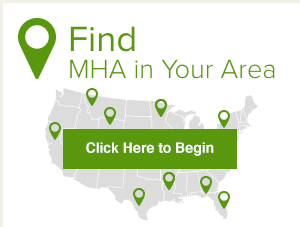You are here
Mental Health in America - Prevalence Data
Prevalence of Mental Illness
The scores for the six prevalence measures make up the Prevalence Ranking.
The 6 measures that make up the Prevalence Ranking include:
- Adults with Any Mental Illness (AMI)
- Adult with Substance Use Disorder in the Past Year
- Adults with Serious Thoughts of Suicide
- Youth with At Least One Major Depressive Episode (MDE) in the Past Year
- Youth with Substance Use Disorder in the Past Year
- Youth with Severe MDE.
A high ranking on the Prevalence Ranking indicates a lower prevalence of mental health and substance use issues. For example, states that rank 1-10 have lower rates of mental health and substance use problems compared to states that ranked 42-51.
Adult Prevalence of Mental Illness - Adults with Any Mental Illness (AMI)
18.07% of adults are experiencing a mental health illness. Equivalent to 44 million Americans.
4.13% are experiencing a severe mental health illness
The state prevalence of adult mental illness ranges from 15.50% in New Jersey to 22.61% in Oregon.
According to SAMHSA, “Any Mental Illness (AMI) is defined as having a diagnosable mental, behavioral, or emotional disorder, other than a developmental or substance use disorder. Any mental illness includes persons who have mild mental illness, moderate mental illness, and serious mental illness."
Adult with Substance Use Disorder in the Past Year
7.93% of adults in America reported having a substance use disorder in the past year;
2.76% an illicit drug use disorder in the past year;
6.09% an alcohol use disorder in the past year.
The state prevalence of adults with substance use disorder in the past year ranges from 6.33% in West Virginia to 10.59% in the District of Columbia.
Substance Use Disorder is defined as meeting criteria for illicit drug or alcohol dependence or abuse. Illicit Drug Use includes the misuse of prescription psychotherapeutics or the use of marijuana, cocaine (including crack), heroin, hallucinogens, inhalants, or methamphetamine. Misuse of prescription psychotherapeutics is defined as use in any way not directed by a doctor, including use without a prescription of one's own; use in greater amounts, more often, or longer than told; or use in any other way not directed by a doctor. Prescription psychotherapeutics do not include over-the-counter drugs.
Adults with Serious Thoughts of Suicide
The percentage of adults reporting serious thoughts of suicide is 4.04%.
The estimated number of adults with serious suicidal thoughts is over 9.8 million—an increase of 200,000 people from last year’s data set .
The state prevalence of adults with serious thoughts of suicide range from Florida at 3.34% to Utah at 5.62%.
Youth with At Least One Major Depressive Episode (MDE) in the Past Year
12.63% of youth (age 12-17) report suffering from at least one major depressive episode (MDE) in the past year.
Childhood depression is more likely to persist into adulthood if gone untreated.The number of youth experiencing MDE increased by 175,000 from last years' dataset.
The state prevalence of youth with MDE ranges from the District of Columbia at 9.91% to Indiana at 15.93%.
Youth with Severe Major Depressive Episode
8.7% of youth (over 2 million youth) cope with severe major depression. Depression in youth often co-occur with other disorders like substance abuse, anxiety and disorderly behavior.
The number of youth experiencing Severe MDE increased by 100,000 from last year’s dataset.
The state prevalence of youth with Severe MDE ranges from 6.1% in New Jersey to 12.7% in Nevada.
Youth with Substance Use Disorder in the Past Year
4.61% of youth in America reported having a substance use disorder in the past year.
The state prevalence of youth with substance use disorder in the past year ranges from 3.55% in Pennsylvania to 8.33% in Alaska.







this page